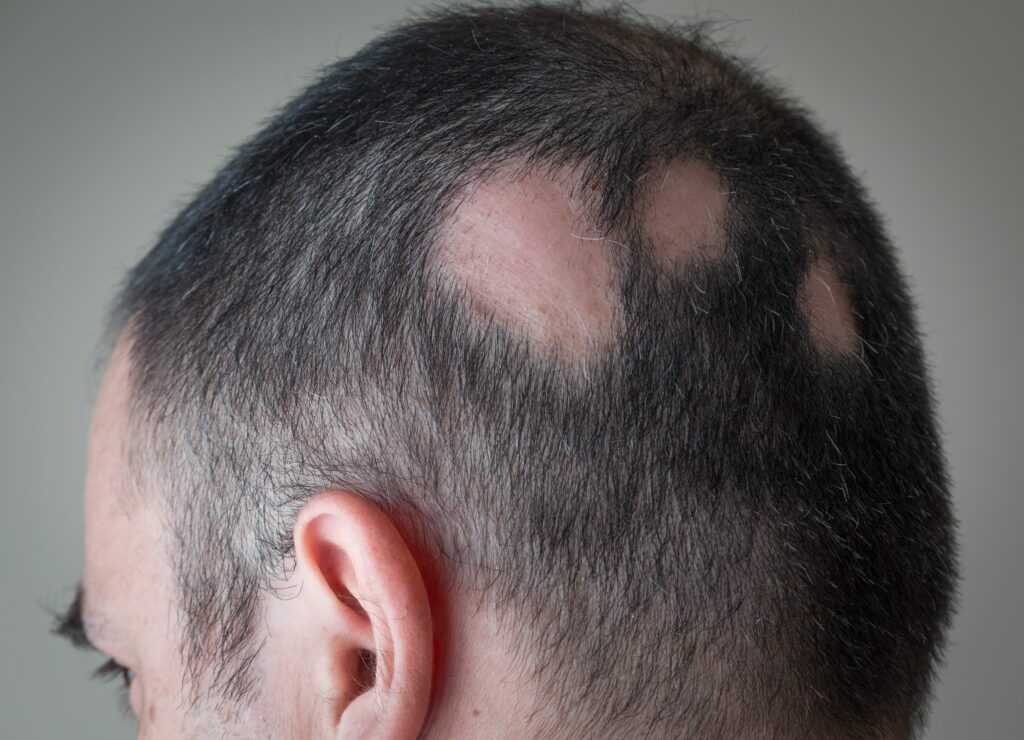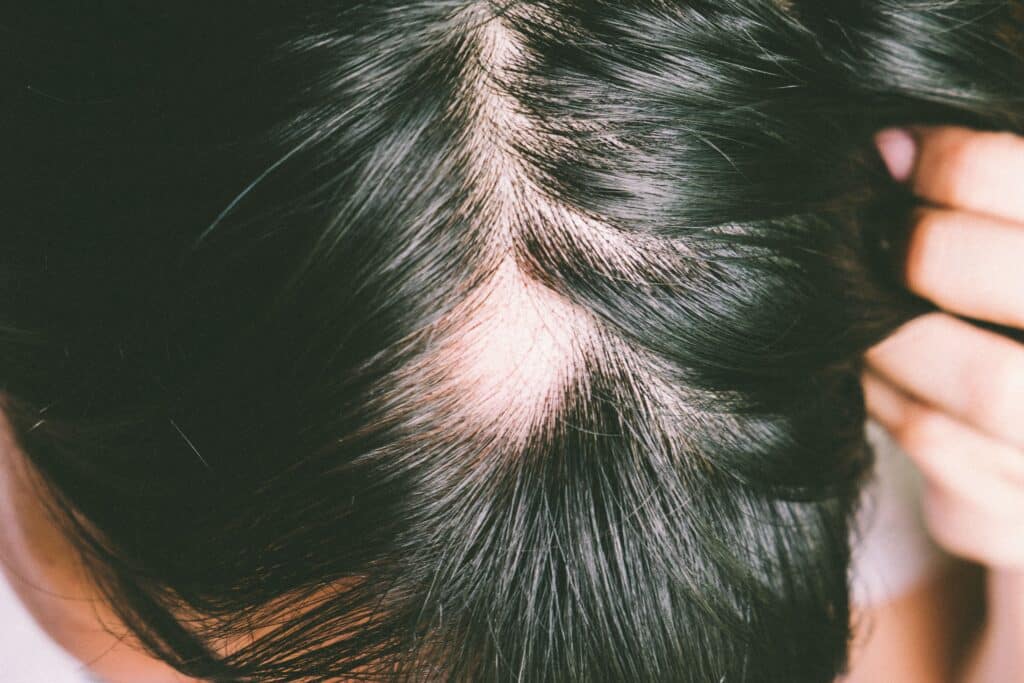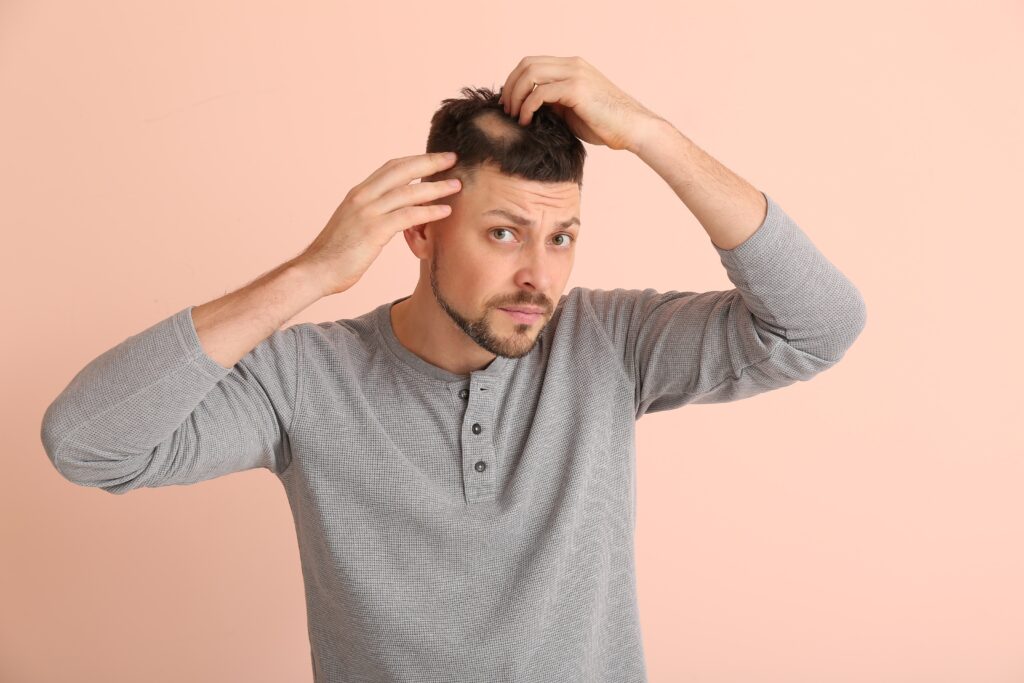Scarring alopecias are a severe and challenging form of hair loss. The body’s inflammatory cells attack the follicles and replace them with scar tissue. It leads to smooth, bald areas where hair can never regrow again.
There are various forms of scarring hair loss. These include frontal fibrosing alopecia, lichen planopilaris, and central centrifugal cicatricial alopecia.
Even though the prospect of permanent scarring hair loss can be devastating for a lot of people, there is hope for preserving your existing hair with early diagnosis. Indeed, proper diagnosis and management can stop the progression of hair follicle destruction. As a matter of fact, the fundamental premise is prompt intervention before too many viable follicles are eliminated. Any delay in treatment can lead to irreversible follicle destruction and hair loss.
The Cosmedica Clinic achieved impressive outcomes with early diagnosis of scarring hair loss. They combine advanced medical therapies with surgical techniques like direct hair implantation (DHI).
These techniques make it possible to restore hair to balding areas of the scalp. In the following sections, we’ll dive deeper into the various types of scarring hair loss and the diagnostic process. We will also explore the treatment approaches for this permanent form of hair loss.
Non-Scarring vs. Scarring Alopecia

Alopecia is a form of hair loss. Non-scarring alopecia is a condition where the hair follicles are not permanently damaged. In this case, the hair can regrow over time with proper treatment. The most common forms of non-scarring hair loss include:
- Male/female pattern hair loss (androgenetic alopecia)
- Alopecia areata
- Telogen effluvium
- Traction alopecia
Scarring alopecia involves permanent destruction of the hair follicle due to inflammation and scar tissue formation. The hair follicle itself is the target of the disease process. Inflammatory cells replace the hair follicle with scar tissue, making future hair growth impossible. Around 3% of all dermatological cases involve this type of hair loss.
What Are the Different Types of Scarring Alopecia?

Scarring alopecias are classified as primary and secondary. The main types of scarring or primary “cicatricial” alopecias are:
Central Centrifugal Cicatricial Alopecia (CCCA)
CCCA is more common among black women or women of African descent. It starts with hair loss at the crown and radiates outwards in a circular pattern. Inflammation and progressive scarring can lead to permanent hair loss.
Frontal Fibrosing Alopecia
Frontal Fibrosing Alopecia is the most common form of scarring hair loss. FFA occurs in 10% of all hair loss cases. It causes scarring and hair loss at the frontal hairline, eyebrows, and body areas.
Lichen Planopilaris (LPP)
Lichen Planopilaris is a chronic inflammatory condition that causes patchy hair loss. It most commonly affects the sides and back of the scalp. The lymphocytic inflammatory cells attack the hair follicles and lead to scarring.
Folliculitis Decalvans
Folliculitis Decalvans is a neutrophilic inflammatory condition. It causes swollen, pus-filled spots on the scalp and subsequent scarring hair loss.
Dissecting Cellulitis
Dissecting Cellulitis can present with abscesses, scarring alopecia, and potential systemic symptoms.
Lupus Erythematosus
Lupus Erythematosus is an autoimmune condition in which the body attacks its own cells and tissues, including the hair follicles. This can lead to potential scarring and permanent hair loss.
What Does Scarring Alopecia Look Like?
The presentation of scarring hair loss depends on the specific type of the disease. In early active stages, there are typically patches of hair loss accompanied by:
- Redness and inflammation
- Scaling, flaking, or peeling
- Pustules, pus-filled spots
- Itching, burning, or pain
- Crusting or oozing lesions
The progression of inflammation destroys more and more hair follicles. The small bald patches join into larger expanses of smooth, shiny scalp. Permanent scar tissue formation on the scalp prevents further hair regrowth.
The patterns and locations of hair loss can also differ based on the type of hair loss. For example, CCCA affects the crown area and spreads outwards in a circular pattern. Lichen planopilaris favours the sides and back of the scalp. Frontal fibrosing alopecia causes a receding frontotemporal hairline.
Can Hair Grow Back with Scarring Alopecia?

Unfortunately, scarring hair loss is permanent. Any hair follicles destroyed lose the biological capability to regrow hair again. It makes early diagnosis and aggressive treatment so crucial. Doctors use scalp biopsy and other lab tests to confirm the diagnosis.
The goal is to halt further progression before the permanent destruction of more follicles. This allows proper initiation of treatment as soon as possible. However, any scarred follicles will remain permanently bald.
What are the Treatments for Scarring Alopecia?
For scarring alopecia, most treatment options aim to prevent further permanent hair loss. Calm the underlying inflammation process and prevent further permanent hair loss from occurring. Typical treatment approaches include the following:
Antibiotics and Anti-Inflammatories
Oral antibiotics like doxycycline or minocycline help fight bacterial infection and reduce inflammation. Topical corticosteroid creams and solutions applied directly to affected areas also decrease inflammation.
Steroid Injections
For scarring hair loss, doctors administer anti-inflammatory medications directly to the scalp. They usually use triamcinolone or other corticosteroids to reduce inflammation in affected areas.
Immunosuppressants
For severe autoimmune hair loss, doctors prescribe immunosuppressant medications. These drugs suppress the overactive immune system. Immunosuppressants are helpful in conditions like lupus Erythematosus.
Immunomodulators
Hydroxychloroquine modifies or shifts the immune system’s inflammatory response away from attacking hair follicles.
Hair Growth Stimulation
Some regenerative treatments, such as minoxidil solution and platelet-rich plasma (PRP), may help stimulate hair growth around the affected areas.
Hair Transplantation
Hair transplants can restore hair to bald areas after scarring hair loss. Doctors use follicular unit extraction (FUE) or the DHI technique for scarring hair loss. You can look at the multiple options at Cosmedica Clinic and choose your desired procedure.
Conclusion
Scarring hair loss can be a complex condition to cope with. Watching your hair thin and disappear permanently is highly disheartening.
The key is acting quickly before too much irreversible damage occurs. It would help to recognize warning signs like redness, scaling, or new bald patches. Any follicles that have already scarred over will not recover.
But treatments can stop further destruction in its tracks. Scarring alopecia requires being proactive and exploring all available treatment avenues. A comprehensive management approach can help mitigate its visible appearance. You can always head over to Cosmedica Clini for a free hair consultation and evaluation.
